Process design, a crucial business methodology, has significantly influenced how we experience everyday life. Our lives are a blend of emotions, driven by adrenaline and habituation, keeping us alive amidst life's fast pace.
Technological revolutions have transformed consumption patterns and management strategies in organizations.
To convert resources into results efficiently, process design offers an invaluable approach. Embracing process design is no longer optional, but necessary in this digital age. By integrating cutting-edge innovations, organizations unlock their true potential, staying ahead of the competition. Process design extends beyond businesses, guiding individuals to improve daily routines and achieve work-life balance.
Process design, what’s about it?
Process design establishes functions and determines the process used to produce a product or service. Much of the decision-making in the process is made in the long term and can't be reversed in a simple way, especially when there is a capital investment. For this reason, it's essential that it is designed in alignment with the general strategies of the organization, being functionally satisfactory to the requirements demanded.
This type of work management must have a solid structure that guarantees its effectiveness and efficiency since it allows for the repetition of established tasks. Otherwise, workers will resort to routine actions based on their experience, leading to inconsistency and inefficiency.
Process optimization? Yes.
This type of procedural organization encompasses a wide range of execution modes. From the entirely manual task to automation as a simplification of functions. In this sense, the nature of process design is transformation. Thus, process design must take into account methods and economic considerations.
The structure of a process design
The process has two major components:
- Decision in process design: decisions are those strategies arranged by creativity and strategy for the benefit of the company or institution.
- Process structure: it comprises specifications and requirements to comply during the cycle. On this, lies the importance of a good design.
This way of developing workflows is an input for development. It must establish the functions needed and their consequences by the company's policies. It's precisely here where the proposal of functional alternatives also comes into play according to the cost analysis since the beginning.
In terms of typology, we can recognize three types of design processes:
- Intermittent or project-based process (customized, flexible, and highly innovative. Each requirement is worked on independently)
- Repetitive process (the work team and the arrangement of resources are functional. It's come up as sales are developed)
- Continuous process (there's a high esteem for a specific product or service, so there are standard models. Product variety and innovation are low)
When is the ideal time to introduce process design in my company?
- Introduction of a new product or service to the market
- Redesign of a product or service
- The desire for change in competing priorities within the company
- Increased demand for services
- Existence of inadequate business performance
It's about new organizations that engage in business process design when they begin to think about the forms and methodologies they will adopt when implementing something entirely innovative or at least thinking about redesigning it. Likewise, effective business processes must be scalable and replicable.
Trial and error
The important thing is to test and verify the new process before it's implemented within the company. A simple and quick way to do this is to execute actions of the cycle and expand. Likewise, another strategy is using specific procedural sabotage, so that the appearance of some defective event occurs. There, the identification, analysis, and subsequent resolution of the problem should be carried out, so that it is eliminated and avoids future situations that slow down the created process.
